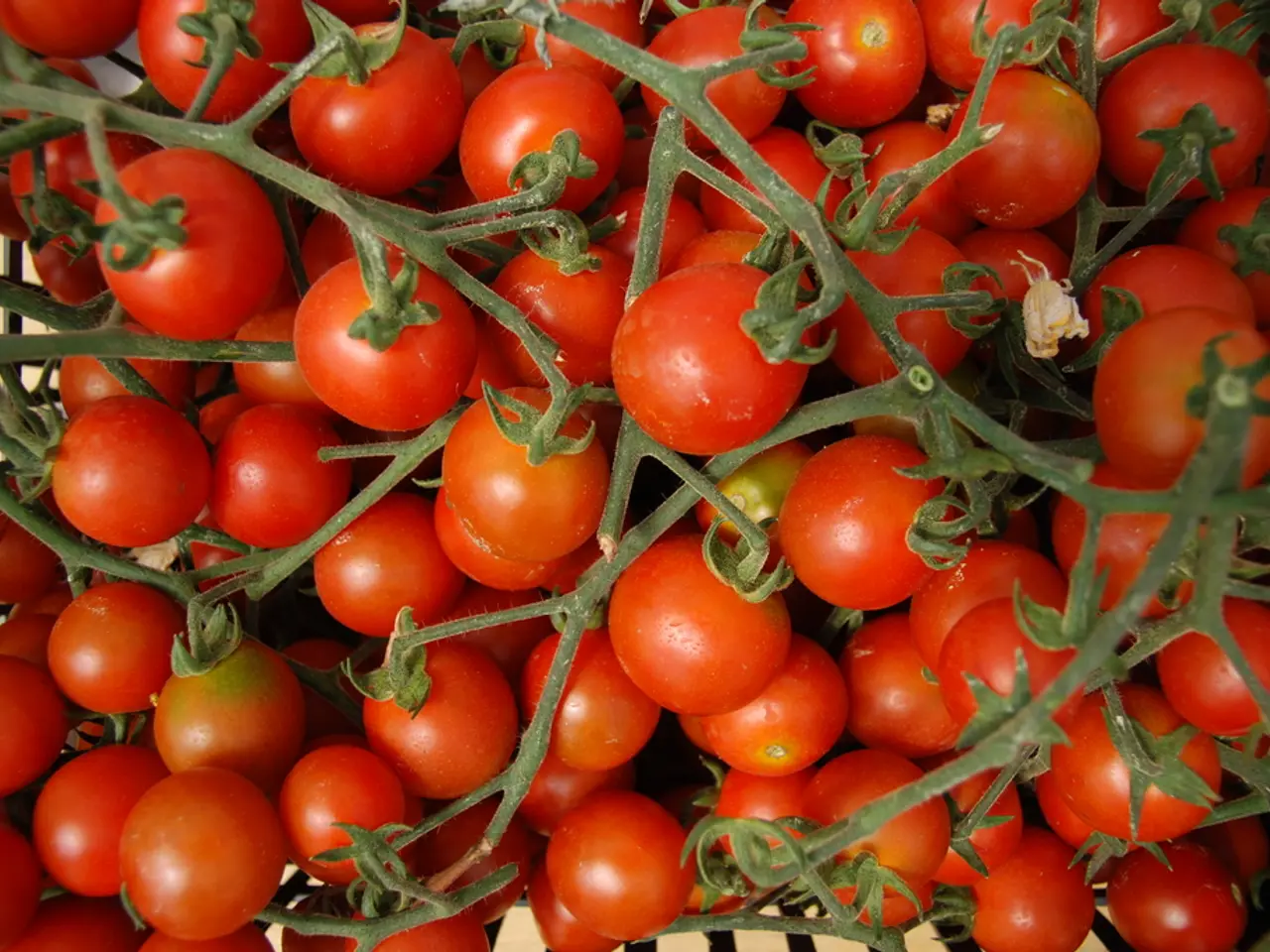Essential Guidelines for Trimming Indeterminate Tomato Plants for Thriving Growth
In the world of gardening, pruning indeterminate tomato plants is a crucial practice for a bountiful harvest. Here are some expert tips to help you achieve a successful tomato crop.
Pruning indeterminate tomatoes involves regular removal of small shoots (suckers) and lower leaves, as well as pruning the tops of the plants later in the season. By doing so, you are channeling the plant's energy towards fruit production, improving both tomato size and yield while reducing disease risks.
1. **Remove small suckers:** Regularly pinch off the small shoots that form in the leaf axils (known as suckers) when they are about 1-2 cm long. This prevents the plant from wasting energy on excess foliage and encourages nutrients to focus on fruit production.
2. **Prune regularly throughout the season:** Continue pruning every 10 to 14 days to maintain airflow and light penetration, which reduces disease risk and improves fruit quality.
3. **Remove lower leaves:** As plants grow, take off any yellowing or diseased leaves at the bottom to improve air circulation and further reduce disease pressure.
4. **Prune aggressively but carefully later in the season:** When the growing season nears its end, trim the tops of the plants to stop vertical growth. This will help the plant focus on ripening existing tomatoes, producing larger fruits on the lower branches before the plant dies.
5. **Leave branches with fruit:** When pruning, avoid cutting off stems that already bear tomatoes. These should be left intact to continue maturing fruit.
6. **Use clean, sharp tools:** Always prune with sanitized, sharp pruners to avoid spreading disease. It's recommended to sanitize pruning shears between uses to maintain the health of your garden.
7. **Support and train your plant:** Since indeterminate tomatoes grow tall and vine-like, use tall stakes, cages, or trellis systems to train the main stem(s) upward and keep the plant manageable. Training plants to one or a few leaders (main stems) can simplify pruning and improve air flow.
By following these expert guidelines, you can maximize the yield and health of your indeterminate tomato plants. Here's a summary table for easy reference:
| Pruning Tip | Purpose | When to Do It | |----------------------------------|-------------------------------|----------------------------| | Remove small suckers (1-2 cm) | Focus energy on fruit growth | Every 10-14 days in season | | Remove lower yellow/diseased leaves | Improve airflow, reduce disease | As plant grows | | Prune tops late in season | Stop growth, ripen fruit | Near season end | | Leave fruit-bearing stems | Preserve developing tomatoes | Always | | Use clean tools | Prevent disease spread | At every pruning |
Remember, pruning helps with fruit set by providing the plant with more resources to set fruit. Using a holster for tools can make the pruning process more efficient by keeping everything in one place.
Larry Meyers, a gardening expert with over 10 years of lawn and landscaping experience, aims to share his knowledge in the field of gardening and create a one-stop shop for all gardening information and needs. Happy pruning!
- Embracing the home-and-garden lifestyle, you can enhance your tomato garden by adopting a consistent pruning regimen for your indeterminate tomato plants, which will lead to a more bountiful harvest and improve both fruit size and yield.
- To maintain a healthy and picturesque home-and-garden environment, consider investing in tools like pruners, stakes, cages, or trellis systems to facilitate proper training and pruning of your indeterminate tomato plants, thereby promoting growth and productivity in your home-and-garden space.




